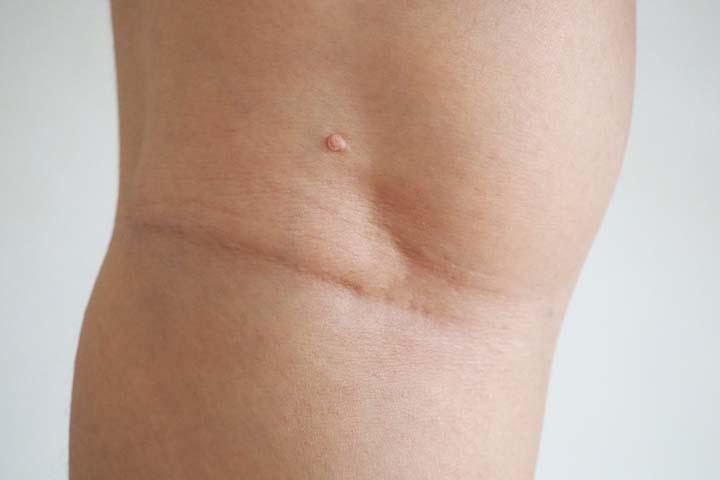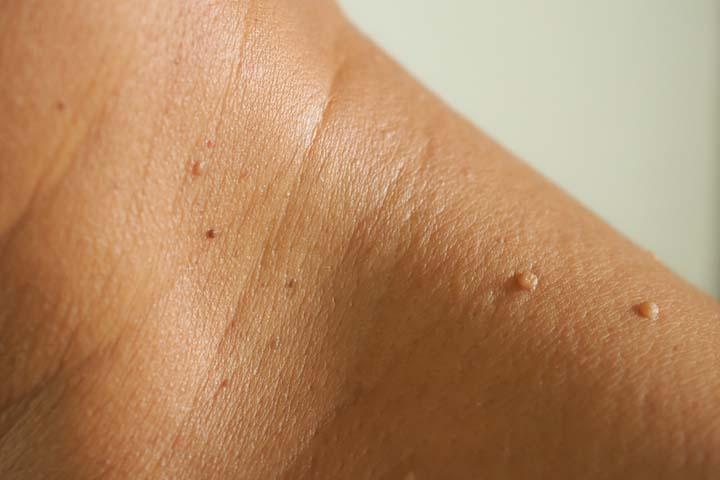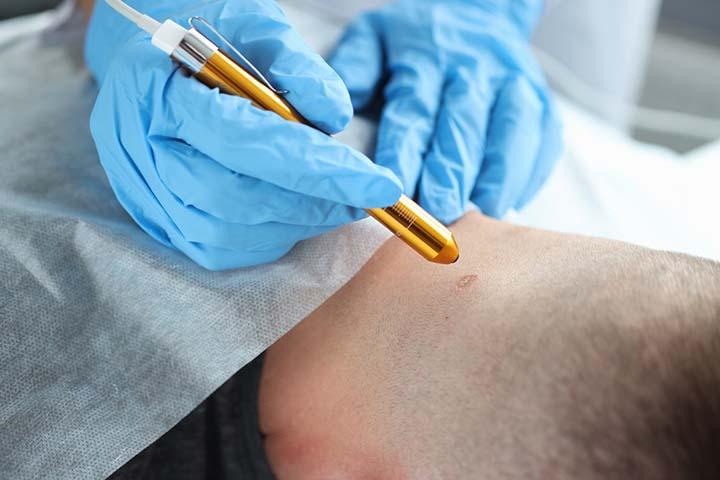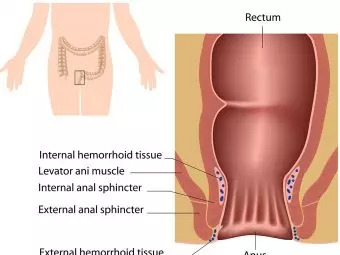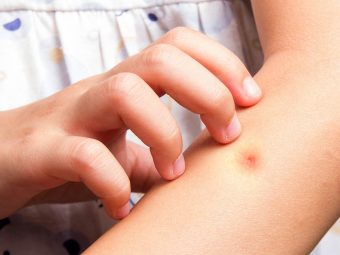
Image: ShutterStock
Acrochordons or skin tags are soft and small skin bumps often seen on skin folds such as armpits, groin, buttocks, or eyelids (1). Self-treatment for skin tags on children is not recommended due to the risk of skin infections. Skin tags are harmless, painless, non-cancerous (benign growths), but some children may not be comfortable with them. Usually, these tiny skin lesions can be from 1mm to 2mm in size.
If there is an esthetic concern or any discomfort, you may connect with a specialist in pediatric dermatology to seek help for skin tag removal. Read on to know the causes and treatment options for skin tags on children.
Causes Of Skin Tags In Children
Image: Shutterstock
Skin tags are a collection of blood vessels and collagen fibers surrounded by skin layer (thin epidermis). The causes of skin tags are not entirely known, but the following conditions and situations seem to increase their occurrence.
- Chafing and friction in the skin folds: Some parts of the body with skin folds, like neck, groin, eyelids, and armpits, are susceptible to skin tags (2).
- Genetic disorders: Although rare, conditions such as tuberous sclerosis and Birt-Hogg-Dube syndrome increase the possibility of skin tags (2).
- Obesity: Obese or overweight children could be at a higher risk because of friction of the skin.
- Chronic problems: Health issues, such as type 2 diabetes and high blood pressure, seem to increase the risk of developing skin tags (3).
- HPV infection: Contracting the human papillomavirus (HPV) infection may increase the possibility of developing skin tags (4).
- Defects in body functions: Sometimes, skin tags may be related to defects in body functions, such as impaired lipid metabolism and abnormalities in liver enzyme (5).
- Children who have diabetes.
 Did you know?
Did you know?The risk factors of skin tags may not always be apparent. It is good for parents to know how to spot a skin tag in kids.
Symptoms Of Skin Tags In Children
Image: Shutterstock
Skin tags are neither harmful nor painful by themselves. Any pain in a skin tag is often due to friction or when the skin tag twists, causing a blood vessel to clot.
 Quick fact
Quick factYou can usually identify skin tags by their skin-colored or pinkish bump-like appearance. The other signs and symptoms are (6).
- In children, tags commonly appear on the face, stomach, chest, groin, arms, and legs.
- The skin tag could be a bump or have a long stalk to hang from the skin.
- Some tags could be darker than the surrounding skin and appear as tiny dark bumps.
- Skin tags often appear in clusters. If you spot a tag, look for the skin around it for more of them.
 Quick fact
Quick factHow Are Skin Tags Diagnosed?
There are no significant tests required to diagnose skin tags in children. A physical examination is usually enough for a doctor to diagnose skin tags. They may check the size and location of the tag to determine its cause. If the doctor suspects the bump to be some other skin condition, then a biopsy may be performed. Biopsy for skin tags is seldom needed.
Treatments To Remove Skin Tags In Children
Image: S: iStock
Based on the skin tag’s size or form, child’s age, and health condition, the doctor may suggest any of the following treatment options.
- Freezing: This technique is also called cryotherapy or liquid nitrogen method. The doctor uses a spray or swab to apply liquid nitrogen on the skin tag. The frozen skin tag is then removed with a pair of medical tweezers. Sometimes, the frozen tag comes off in a few days by itself. There might be a small blister after the procedure, but the recovery will be on its own. (7) (8).
- Cutting: In some cases, doctors may use clean, sharp scalpel to remove the skin tag from the skin gently. (9) (10).
- Burning: A heated wire is used by the doctor to burn the stem of the skin tag. There is minimal bleeding with this method. But the doctor will decide if this treatment method can be used for the child (11).
- Ligation: It involves tying a surgical thread to the stalk of a skin tag and thus cutting off its blood supply. It causes the skin tag to fall on its own. This procedure may be slow and may only be suitable if the child has a few skin tags.
- Laser therapy: It is very simple and painless. However, it is quite expensive.
 Quick tip
Quick tipMost skin tags are painless and harmless, but children may not be comfortable with it. It may prompt many parents to explore ways to remove skin tags at home.
Are There Home Remedies To Remove Skin Tags In Children?
Image: Shutterstock
People apply salicylic acid, apple cider vinegar, tea tree oil, or garlic to the tags every day until the tag falls off, but there is no scientific backup to prove it.
Trying to remove skin tags at home with nail clippers or other tools, or pastes and lotions may result in infection, scarring, or bleeding.
If your child wants the skin tags to be removed, you may consult the doctor to know about the treatment options.
Is It Possible To Prevent The Spread Of Skin Tags?
Image: S: iStock
It is not possible to prevent skin tags. It is not contagious. However, children can be taught measures to avoid the factors that increase the risk of developing skin tags.
- Dress the child in clothes that minimize the friction between skin folds.
- Maintain good hygiene to avoid HPV and related issues like verrucae or plantar warts. Washing hands and not sharing towels is also essential. There are vaccines available for a few types of HPV. Speak to a doctor about immunizing your child and other family members if there is a high risk of contracting the infection.
- Proper management of congenital conditions may help in reducing the risk of skin tags.
Frequently Asked Questions
1. Does vitamin E oil remove skin tags in children?
Vitamin E is beneficial for the skin since it helps retain moisture and prevents cell damage (12). However, insufficient research has been conducted to conclude whether it can help remove skin tags in children.
2. When should I worry about skin tags in children?
Skin tags generally do not cause any discomfort and are not a cause for concern. However, you could consider getting them removed if they frequently snag on jewelry and thus cause pain or bleeding (13).
Skin tags on kids are seldom severe, usually seen in some regions of the body, and caused due to skin friction, obesity, genetic reasons, and other medical conditions. Though they do not need medical attention, your child may be uncomfortable with them. However, get your child evaluated if you feel the skin tags are growing in size or associated with other skin conditions. Furthermore, you may consult a dermatologist to discover the risks, treatments, and management of skin tags in children. Nevertheless, train your child to maintain good overall hygiene and dress in comfortable clothing to reduce the risk of skin tags.
Infographic: What Disorders Cause Skin Tags In Children?
Skin tags in children can occur due to various reasons. Identifying the disorders linked to skin tags is vital since some reasons require treatment. Go through the infographic to learn about the disorders linked to skin tags in children. Illustration: Momjunction Design Team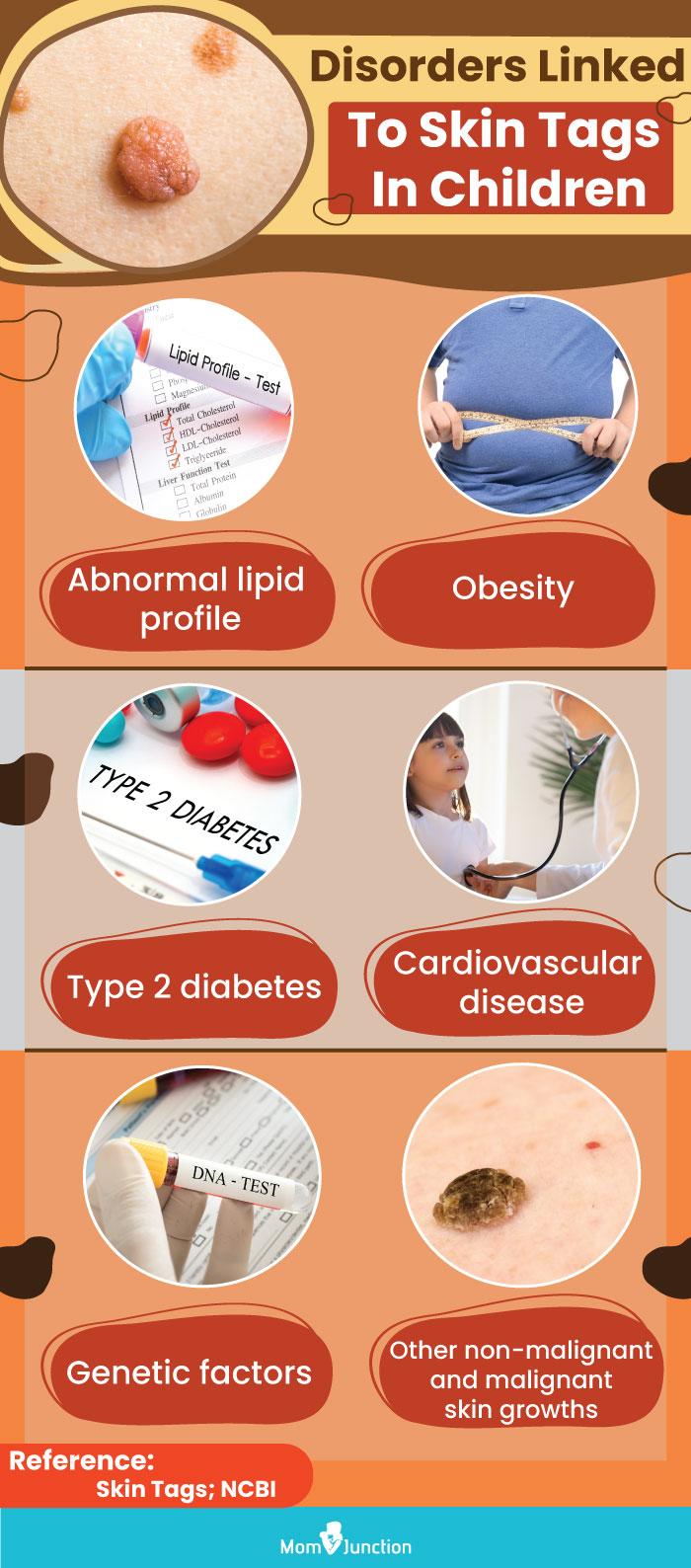
Get high-quality PDF version by clicking below.
Download Infographic
Key Pointers
- Skin tags, also known as acrochordons, are tiny and soft growths that often appear on skin folds.
- Skin tags are typically benign, painless, and non-cancerous.
- Children may develop skin tags due to various reasons such as rubbing and friction in skin folds, hereditary conditions, obesity, health problems like type 2 diabetes and high blood pressure, HPV infection, and abnormalities in body functioning.
- Skin tags are typically harmless and painless, and can be identified by their skin-colored or pink appearance.
- A physical examination can confirm the presence of skin tags. There are several treatment options available, including freezing, cutting, burning, ligation, and laser therapy.
References:
2. A. Pandey and S. Sonthalia; Skin Tags; National Center for Biotechnology Information (2019)
3. L. Mitchell; Facts About Skin Tags; University of Utah (2018)
4. J. Chanel; Skin Tag; DermNet NZ
5. A. H. Maluki and A. A. Abdullah; Metabolic Associations with Skin Tags; International Journal of Dermatology and Clinical Research (2015)
6. The Skinny on Skin Tags: 6 Questions and Answers; Penn Medicine (2018)
7. Removing Moles and Skin Tags; Kaiser Foundation Health Plan of Washington
8. H. P. Goodheart; Surgical Pearl: A rapid technique for destroying small skin tags and filiform warts; Dermatology Online Journal (2003)
9. Skin Tags (Acrochordons); Cleveland Clinic
10. K. H. Gardner; Unsighty Skin Tags? Your Doctor Can Help; Intermountain Healthcare (2018)
11. Skin Tag Removal in Children: Care Instructions; Kaiser Permanente
12. Vitamin E for Skin: What Does It Do? https://health.clevelandclinic.org/vitamin-e-for-skin-health/
13. Skin tags; https://www.nhs.uk/conditions/skin-tags/
14. Andréia de Almeida Tamega et al.; (2010); Association between skin tags and insulin resistance.https://pubmed.ncbi.nlm.nih.gov/20464083/
15. Amarendra Pandey and Sidharth Sonthalia; (2022); Skin Tags. https://www.ncbi.nlm.nih.gov/books/NBK547724/



